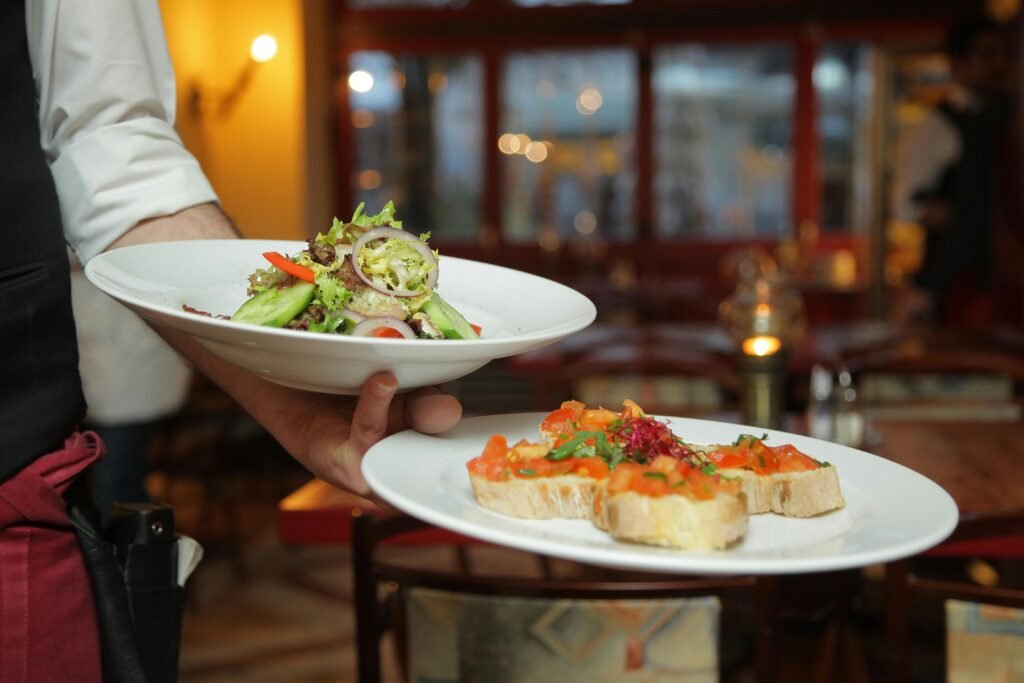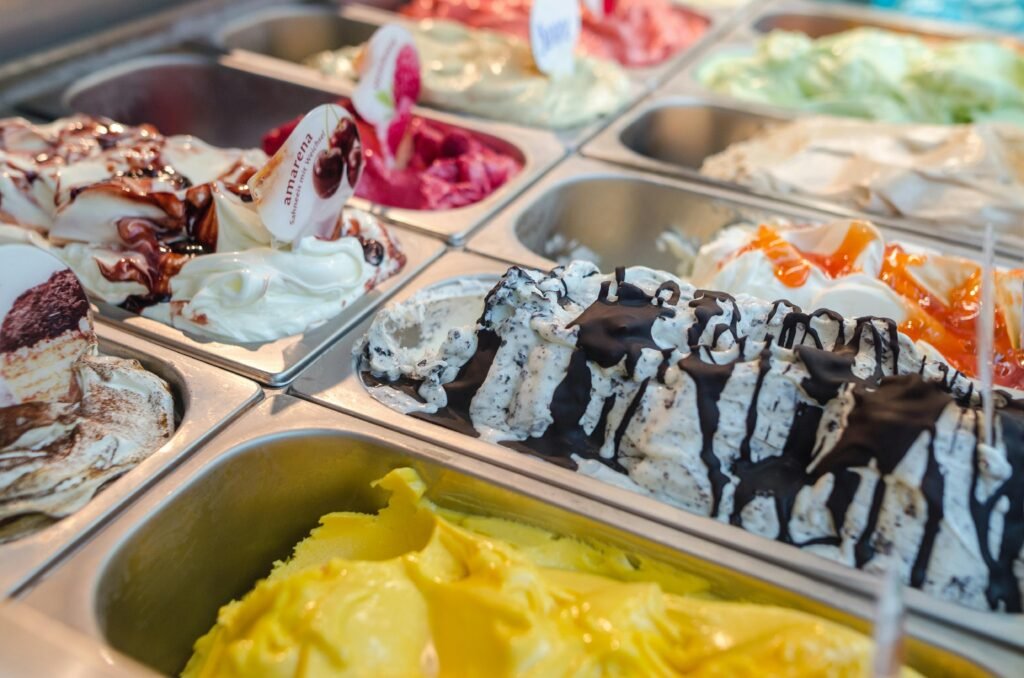Bologna isn’t just another pretty Italian city; it’s the undisputed food capital of Italy, where culinary traditions have been perfected over centuries.
From the birthplace of Bolognese sauce (yes, it’s actually called ragù here!) to the home of mortadella and Parmigiano-Reggiano,
Whether you’re a seasoned foodie or just starting your Italian culinary journey, a food tour in Bologna is the best way to taste the soul of Emilia-Romagna
Get ready to discover why locals have been perfecting these recipes for generations!
Stop 1 – Mercato di Mezzo: A Food Tour in Bologna Starts Here
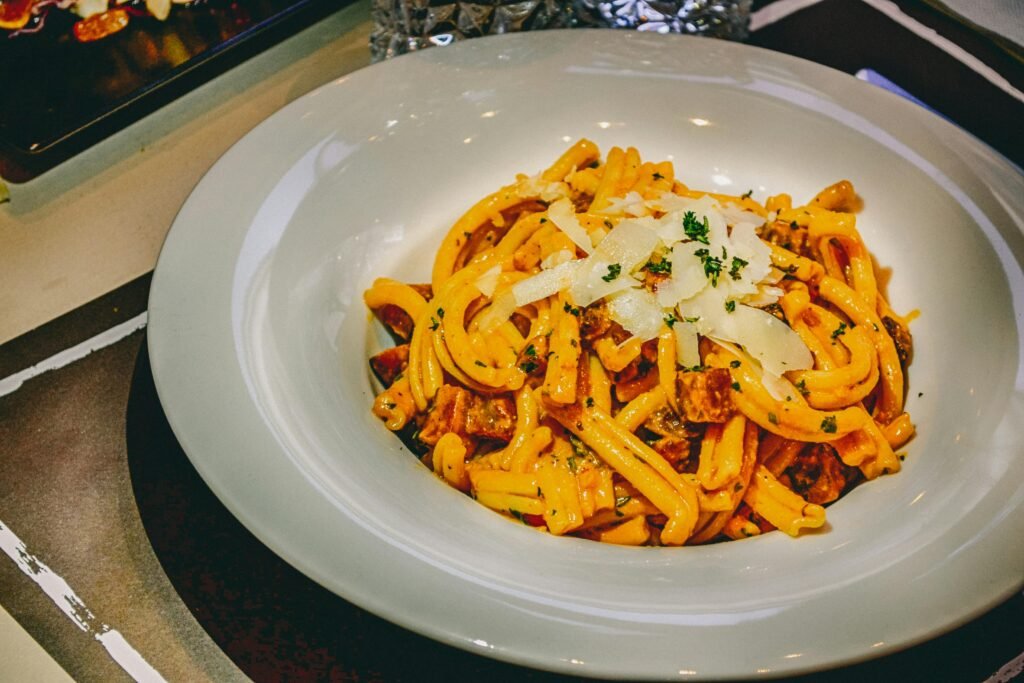
Walking into Mercato di Mezzo feels like stepping back in time because it feels too good.
I’m not being dramatic here – this market has been operating continuously since 1220!
The narrow medieval streets are lined with vendors selling everything from fresh pasta to aged cheeses, and the energy is absolutely infectious.
The market opens at 8 AM, and the best stuff disappears fast.
The staff there knows their stuff and will let you taste different ages – from 12 months to 36 months. The difference is mind-blowing!
Next, head to Osteria del Sole for their unique bring-your-own-food concept. You buy wine there, food from the market, and create your own perfect lunch.
Don’t miss Paolo Atti & Figli for fresh pasta.
I watched them make tortellini by hand, and it’s like watching artists work.
Each piece is folded with precision that comes from generations of practice. Their tagliatelle is what dreams are made of. Ans must click here to know why you should not cut tagliatelle the wrong way in bologna.
Stop 2 – Tortellini Tasting at Traditional Trattoria
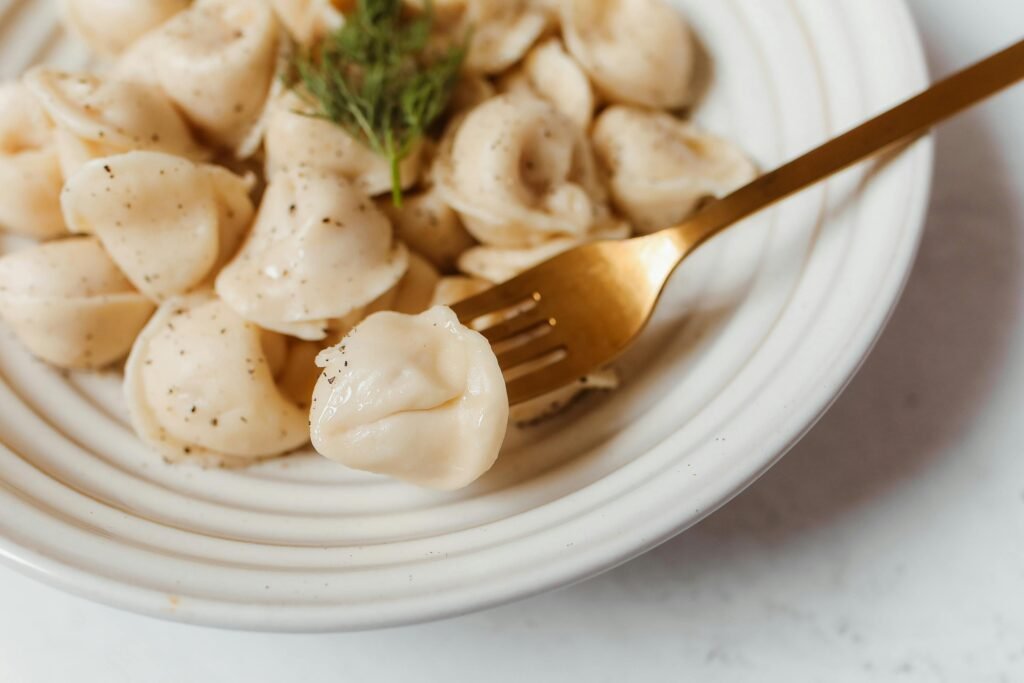
The legend goes that tortellini was inspired by Venus’s navel, but I’m pretty sure it was actually created by some genius who wanted to make the perfect pasta.
Either way, tasting authentic tortellini in Bologna is like hearing your favorite song performed by the original artist.
I’ll never forget my first real tortellini experience at Trattoria di Via Serra.
Here’s what separates authentic tortellini from the tourist stuff: size and filling.
Real Bologna tortellini are tiny – about the size of a fingernail.
If they’re bigger, you’re probably eating tortelloni, which is fine but different.
The filling should be a mixture of pork, prosciutto, and Parmigiano-Reggiano, seasoned with nutmeg. That’s it – no creativity needed here.
On any well-curated food tour in Bologna, this dish is always a centerpiece – and rightfully so.
The traditional serving method is “en brodo” – in a clear, rich broth made from capon bones.
This isn’t just soup; it’s liquid gold that’s been simmering for hours.
My favorite spots? Trattoria Anna Maria for the most traditional experience, and Osteria del Sole if you want to feel like a local.
Da Nello is touristy but their tortellini game is still strong. Avoid anywhere that serves tortellini with cream sauce – that’s not authentic, and frankly, it’s kind of insulting to centuries of tradition.
Stop 3 – Mortadella and Salumi
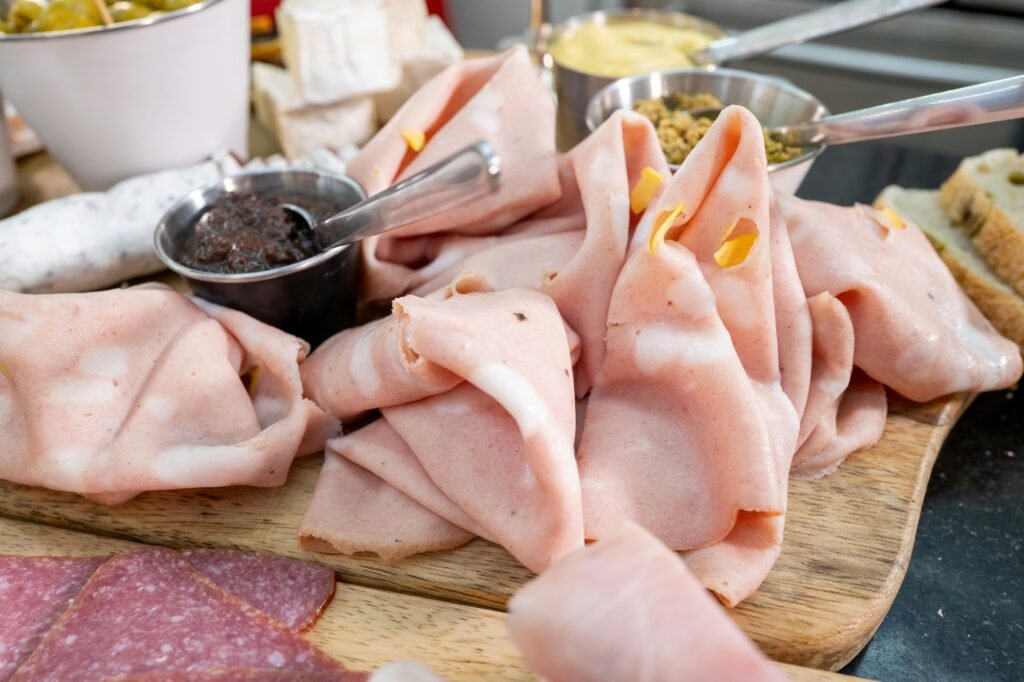
The best mortadella education I ever got was at Salumeria Simoni, where the owner spent 20 minutes explaining the difference between industrial and artisanal mortadella.
Real mortadella is made with finely ground pork, cubes of fat, and pistachios. It’s smooth, delicate, and melts in your mouth – nothing like that rubbery stuff from the supermarket.
Here’s what blew my mind: authentic mortadella takes 24 hours to make.
The fat cubes don’t melt because of the low temperature, creating that beautiful marbled appearance. It’s food science at its finest!
My go-to spots for mortadella include Tamburini (their selection is incredible), Salumeria Simoni (family-run since 1932), and Antica Salumeria Poggi. Each place has its own aging process and flavor profile. Tamburini’s is buttery and mild, while Poggi’s has a more pronounced pistachio flavor.
Stop 4 – Parmigiano-Reggiano Tasting and Education
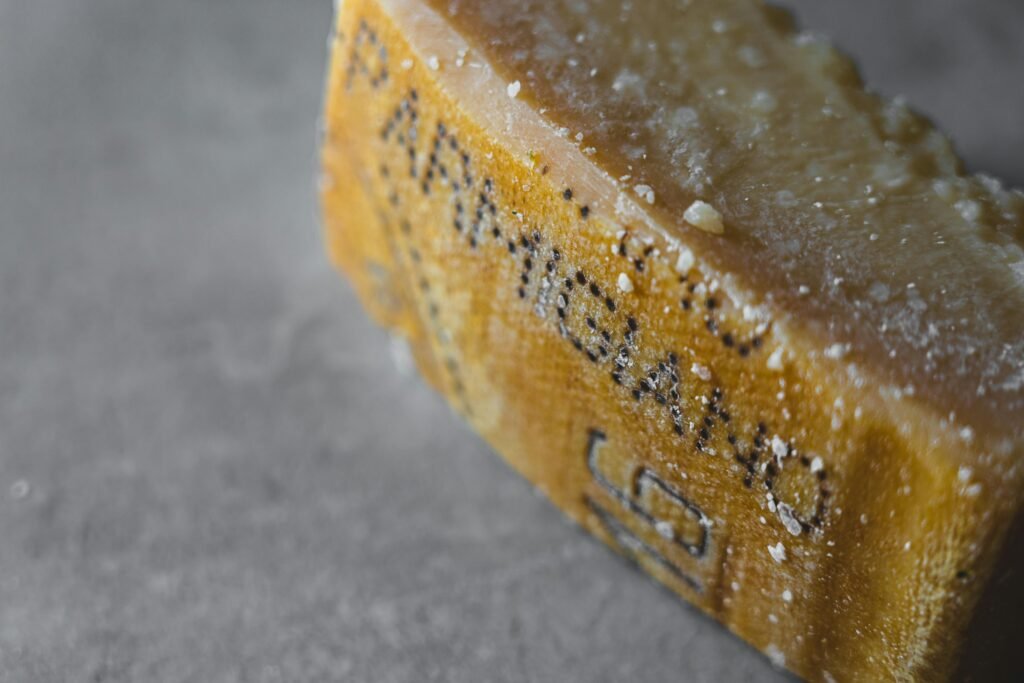
If mortadella is Bologna’s pride, then Parmigiano-Reggiano is its crown jewel.
The thing about Parmigiano-Reggiano is that it’s not just aged – it’s transformed. At 12 months, it’s creamy and mild.
At 18 months, it develops those amazing crunchy crystals.
By 24 months, it’s complex and nutty. And 36-month aged? That’s like tasting concentrated happiness. Each age has its purpose and its perfect pairing.
Here’s what nobody tells you about proper Parmigiano tasting: you don’t cut it, you break it. Those special knives aren’t just for show – they follow the cheese’s natural grain structure.
When you break it properly, you can actually taste the difference. It’s more intense, more aromatic, and the texture is completely different.
If your food tour in Bologna includes a dedicated cheese tasting, make sure it covers different ages of Parmigiano-Reggiano – it’s a masterclass in complexity.
My absolute favorite combination? 24-month Parmigiano-Reggiano with a few drops of 25-year-old balsamic vinegar and a glass of Lambrusco. It’s like a symphony in your mouth – sweet, salty, acidic, and effervescent all at once.
Look for the DOP stamp – it’s your guarantee of authenticity. Real Parmigiano-Reggiano can only be made in specific regions of Italy using traditional methods.
Stop 5 – Traditional Osteria for Ragù Bolognese
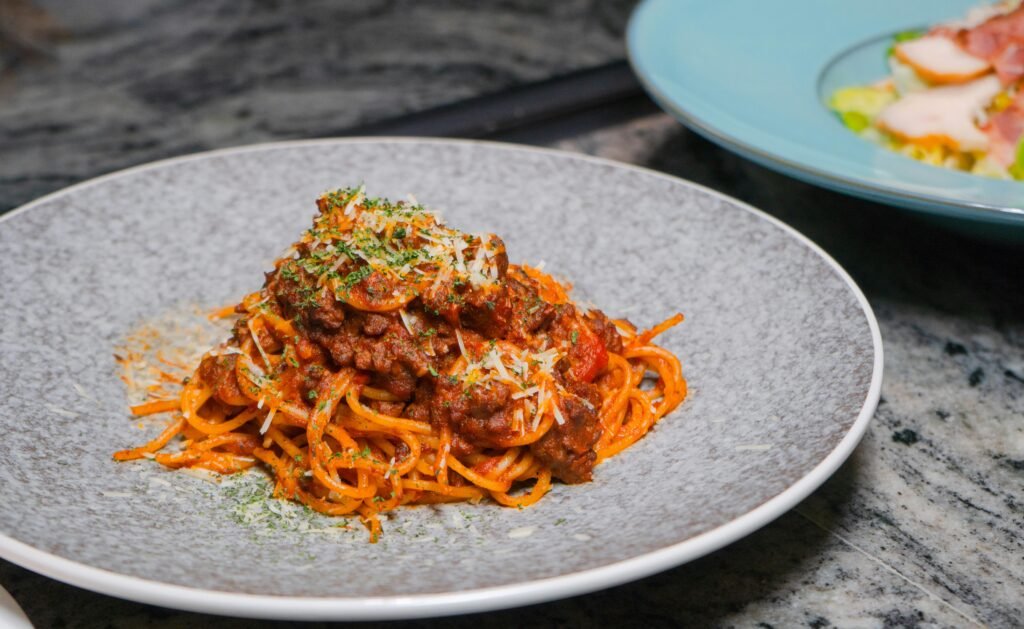
The real deal is ragù alla Bolognese with fresh tagliatelle, and there’s actually an official recipe deposited with Bologna’s Chamber of Commerce.
It includes beef, pork, soffritto (celery, carrots, onions), tomato paste, wine, and milk. That’s it. No garlic, no herbs, no creative additions. Just pure, concentrated flavor that’s been simmering for hours.
The meat is browned slowly, the vegetables are cooked until they’re almost melting, and then everything simmers together for at least three hours.
Some places cook it for six hours or more. The result is a sauce that’s rich, complex, and absolutely nothing like what most people call “Bolognese sauce.”
My favorite ragù experiences? Trattoria di Via Serra for the most traditional preparation, and Osteria del Sole for the authentic atmosphere. Da Cesari is another excellent choice, and they’ve been serving the same recipe since 1955.
The proper way to eat it? Twirl your fork against the plate, not against a spoon. And don’t you dare add more cheese unless it’s offered – the dish is already perfectly balanced.
Stop 6 – Gelato and Local Desserts Experience
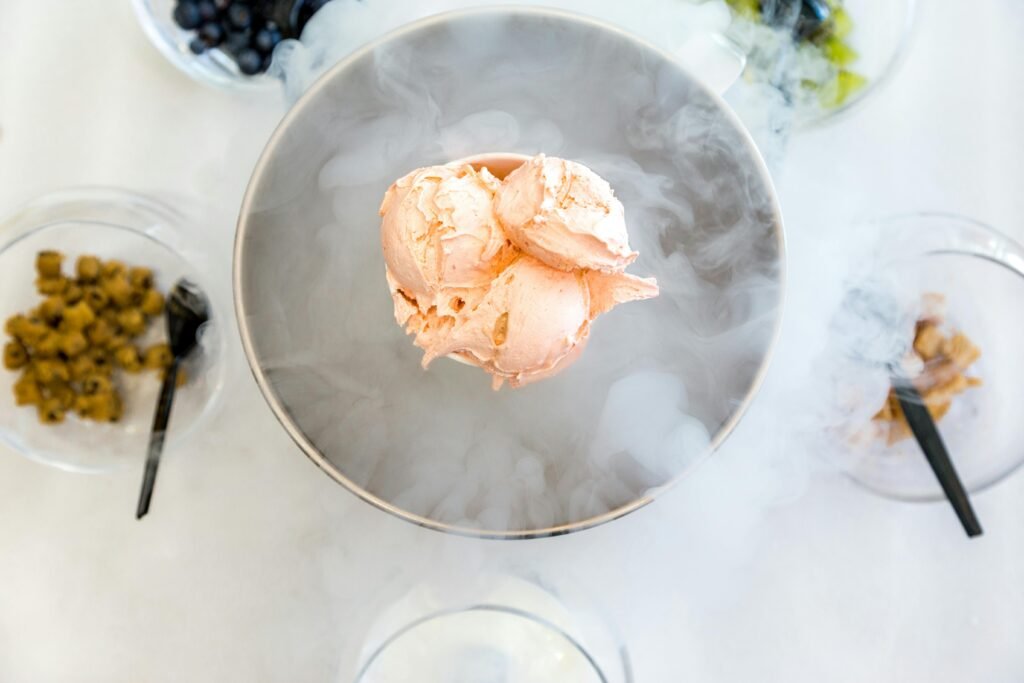
No food tour in Bologna is complete without something sweet – and trust me, the city’s gelato scene is next level.
After all that savory goodness, your palate needs a sweet reset, and Bologna’s gelato scene is absolutely incredible.
The best gelato education I ever got was at Cremeria Funivia, where the owner explained the difference between gelato and ice cream.
Gelato has less air incorporated, so it’s denser and more flavorful. It’s also served at a slightly warmer temperature, which means your taste buds can actually appreciate the flavors instead of being numbed by cold.
My go-to spots? Cremeria Funivia for innovative flavors (their gorgonzola and pear gelato sounds weird but is absolutely divine), and Gelateria delle Moline for traditional favorites. Sorbetteria Castiglione makes the best fruit sorbettos in the city – their lemon sorbet is so intense it’ll make your eyes water.
But gelato isn’t Bologna’s only sweet claim to fame.
Try zuppa inglese (it’s like tiramisu’s sophisticated cousin) or certosino, a traditional Christmas cake loaded with candied fruits and nuts.
Pasticceria Baraldi makes the best certosino in the city, and they’ve been using the same recipe since 1946.
Pro tip: real gelato should look slightly muted in color, not neon bright. If the pistachio gelato is electric green, walk away. Natural ingredients don’t produce crazy colors, and authentic gelato makers know this.
Stop 7 – Local Wine Bar for Lambrusco Tasting

Ending your Bologna food tour without trying Lambrusco is like visiting Paris and skipping the Eiffel Tower.
Many food tours in Bologna include guided Lambrusco tastings, which is the perfect way to appreciate how well local wines pair with Emilian cuisine
I used to think Lambrusco was just cheap, sweet wine until I tasted authentic Lambrusco di Sorbara at Enoteca Italiana.
The dry, effervescent wine with its bright acidity cut through the richness of mortadella and ragù like nothing else could.
It was a revelation that changed my entire perspective on wine pairing.
Lambrusco di Sorbara is light and floral, perfect with delicate dishes.
Lambrusco Grasparossa is more structured and tannic, great with hearty ragù.
Lambrusco Salamino falls somewhere in between and pairs beautifully with Parmigiano-Reggiano.
The best Lambrusco education I ever got was at Osteria del Sole, where the owner walked me through five different producers.
My favorite wine bars for Lambrusco? Cantina Bentivoglio combines wine with live jazz, creating an incredible evening experience.
Why Bologna is Italy’s Ultimate Food Destination
You know what’s funny? I used to think Rome was the food capital of Italy. Boy, was I wrong! After spending three weeks eating my way through Bologna, I realized I’d been missing out on something truly special.
Bologna earned its nickname “La Grassa” (The Fat One) for good reason. This city has been Italy’s unofficial food capital for over 800 years, and trust me, the locals take this title seriously.
Walking through the Quadrilatero district, you’ll see the same pasta shops that have been family-run for generations – some dating back to the 1400s!
If you’re still on the fence, booking a food tour in Bologna is the fastest way to fall in love with the region’s legendary flavors.
What makes Emilian cuisine so darn special? Ingredients.
The fertile Po Valley surrounding Bologna produces some of Italy’s most prized foods.
We’re talking about the birthplace of Parmigiano-Reggiano, authentic balsamic vinegar, and Prosciutto di Parma.
Here’s something that blew my mind: Bologna has more food-related businesses per capita than any other Italian city.
The best part? Bologna hasn’t sold its culinary soul to tourism like some other Italian cities. Sure, you’ll find tourist traps, but locals still eat at the same spots their grandparents did.


